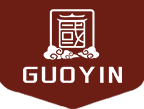08
2025
-
07
Global Stainless Steel Supplier Rankings and Purchasing Guide
This article analyzes the market rankings of major global stainless steel suppliers and provides a professional purchasing guide. By examining trends in the global steel market, it helps buyers understand supplier competitiveness and key material selection factors, offering valuable insights for industrial procurement decisions.
Author:
With the advancement of global manufacturing, demand for stainless steel—a critical industrial material—continues to grow. In 2023, the global stainless steel market reached $150 billion, with an annual growth rate exceeding 5%. Faced with numerous international suppliers, selecting high-quality partners has become a key challenge for buyers. This article systematically analyzes the global stainless steel supplier landscape and offers practical purchasing guidance.
Ⅰ. Analysis of Global Stainless Steel Supplier Rankings
According to the latest industry data, the global stainless steel market follows a "three leaders, multiple competitors" structure:
Tier 1 (Annual Capacity >5 Million Tons)
1. China’s TISCO: The world’s largest stainless steel producer, with an annual capacity of 5.8 million tons.
2. Finland’s Outokumpu: European market leader, specializing in high-performance stainless steel
3. South Korea’s POSCO: Dominates the premium cold-rolled stainless steel sheet market
Tier 2 (Annual Capacity 2-5 Million Tons)
Spain’s Acerinox
India’s Jindal Stainless
Japan’s Nippon Steel
Emerging Players
Indonesia’s Tsingshan Group has rapidly expanded, reaching over 4 million tons in production capacity by 2023, leveraging cost advantages.
Ⅱ. Professional Stainless Steel Purchasing Guide
1. Key Material Selection Factors
Corrosion Resistance: 316L (Mo-added) > 304 > 430; molybdenum grades recommended for chemical applications
Strength Requirements: Duplex 2205 offers twice the yield strength of 304
Machinability: 304 excels in deep drawing, while 430 is better for machining
2. Supplier Evaluation Criteria
Quality Certifications: ISO 9001, ASTM/EN compliance
Delivery Capability: Top suppliers maintain 30+ days of inventory for standard products.
Technical Support: Material test reports, welding guidance, and other value-added services.
3. Cost Optimization Strategies
Bulk Purchasing: Orders over 100 tons typically receive 5-8% discounts
Material Substitution: Using 409 instead of 304 for non-critical parts can reduce costs by 20%.
Logistics Efficiency: Sourcing from Southeast Asia can save 15-20% in shipping costs.
Ⅲ. Global Steel Market Trends & Procurement Recommendations
Key 2024 stainless steel market trends:
1. Green Transition: Europe’s Carbon Border Tax (CBAM) may raise traditional stainless steel prices by 10-15%
2. Regional Shifts: Asia accounts for 70% of global capacity, while the US/EU focus on high-end specialty steel
3. Digitalization: Smart supply chain systems can reduce procurement costs by 30%
Procurement Strategy Recommendations:
For infrastructure projects, prioritize large suppliers like TISCO and POSCO for stable supply
For precision manufacturing, consider premium products from Outokumpu or Nippon Steel
Maintain a qualified supplier list (3-5 vendors) and implement dynamic pricing comparisons
Ⅳ. Conclusion
Amid evolving global stainless steel supply-demand dynamics, buyers must establish a scientific supplier evaluation system, considering both production capacity and technical support capabilities. By leveraging the rankings and purchasing guidelines in this article, companies can enhance procurement efficiency while optimizing costs. Regular monitoring of international steel market trends is recommended to adapt procurement strategies effectively.
Key words:
Related news


